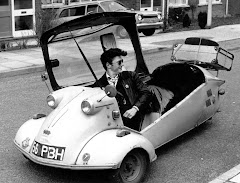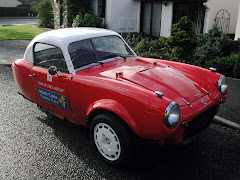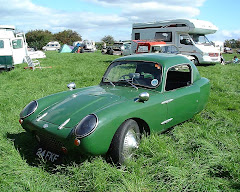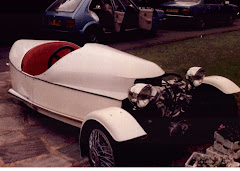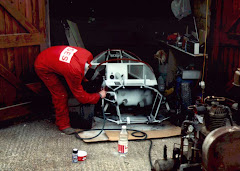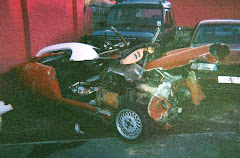When I re conditioned the engine I thought I would make a few modifications. Power wise it was pretty much where I wanted it, but could not help making a few tweaks. For 90% of the time the engine will be operating at low engine speeds so I did not want to upset the high torque at low revs, the higher revs of the standard engine will be able to push the car to high enough speeds, 180mph at 5500rpm so the camshaft would remain the standard item. I gas flowed the head to improve low torque and economy and put a 390cfm 4 barrel Holly carb to improve response time and reduce engine height.
The first pic (reverse order) shows how I shortened the engine to get it in. I have an electronic controlled electric water pump mounted remotely to help shorten the engine, this will give better temperature control. When such a big engine is called upon to produce only small amounts of power at 60 or 70 mph it is likely to run too cold due to high air flow and large surface area of the engine, but in traffic or after driving hard and coming to a standstill, the confines of the Berkeley engine bay may lead to overheating.
The alternator is from a Suzuki Swift and is re-positioned to be driven by the power steering pulley attached to the crank damper further shortening the engine and making it lighter.
I made a new lower sump from aluminum to reduce weight (next pic).
Using the torque converter as the gearbox was the key to getting the engine in the Berkeley. Taking the drive from the drive plate at the back of the transmission pump was the main problem here. I did it by encapsulating the drive plate in molten metal and a small Mini differential output shaft (next 3 pics) that connects the drive to my dog clutch made from a Mini CV joint.





